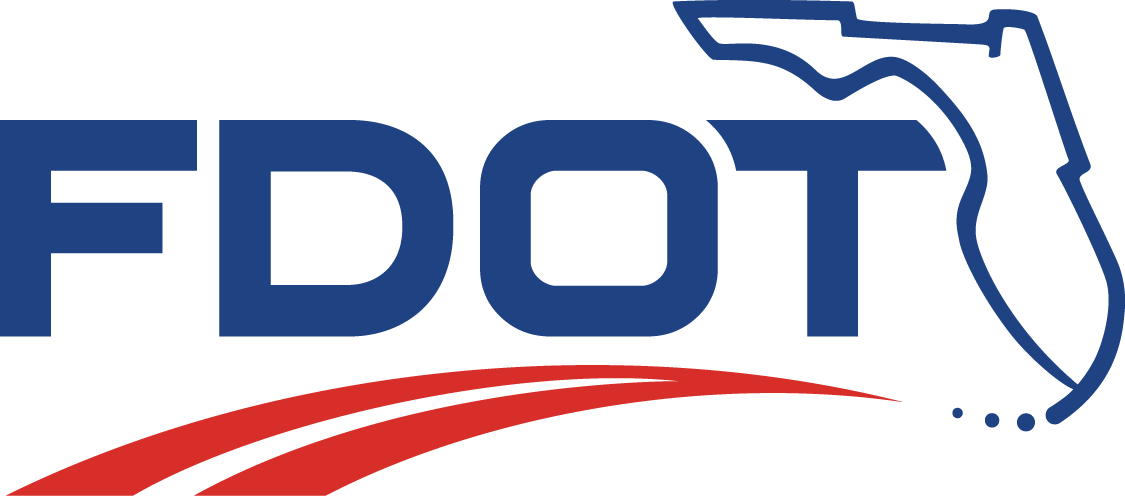Office of Environmental Management
Noise Overview
How Highway Traffic Noise is Evaluated
This video, “Understanding Highway Traffic Noise Policy and Procedure”, was developed by Florida’s Turnpike Enterprise (FTE) to describe how traffic noise impacts are studied and evaluated for transportation projects, as well as explains how to determine if noise walls could provide mitigation and meet applicable qualifying criteria. FREQUENTLY ASKED QUESTIONS
NOISE SENSITIVE LAND USES
Noise sensitive land uses are properties where there is frequent human use that might be impacted by traffic noise levels that approach, meet, or exceed the Noise Abatement Criteria (NAC) – levels established by the FHWA at which abatement must be considered (as required by 23 CFR 772). Typical noise sensitive land uses include residences, schools, places of worship, commercial properties with outdoor areas of use, and recreational areas. If a noise sensitive land use’s future noise levels are predicted to meet, approach, or exceed the NAC, the noise sensitive land use is considered impacted. Noise sensitive land uses are also considered impacted when a substantial increase (i.e., 15 dB[A], as defined by FDOT) in highway traffic noise is predicted to occur as a direct result of a transportation project. A substantial increase typically occurs in areas where traffic noise is a minor component of the existing noise environment but would become a major component after the project is constructed (e.g., new alignment project).
CONTACT
Neil I. Campbell, CPM
Engineering Specialist IV
Central Office Noise Technical Lead
605 Suwanee St, Tallahassee, FL 32399
Telephone: 850.414.5323
Neil.Campbell@dot.state.fl.us
Chat with me in Teams!
NOISE ABATEMENT MEASURES
Noise abatement is considered at all impacted noise sensitive land uses for which there is a NAC. Abatement measures considered include traffic management, alignment modifications, noise buffer zones through application of land use controls and noise barriers.
Noise barriers reduce noise levels by blocking the sound path between a highway and noise sensitive site. To effectively reduce traffic noise, a barrier must be relatively long, continuous (with no openings), and of sufficient height. For a noise barrier to be considered feasible and cost reasonable, the following conditions must be met:
- At least two impacted receptors must be provided a noise reduction of 5 dB(A) or more to be considered feasible.
- A noise barrier must also attain the Noise Reduction Design Goal (NRDG) of 7 dB(A) for at least one benefited receptor.
- Of importance, this receptor may also have been previously identified as meeting the feasibility requirement of receiving a 5 dB(A) reduction (first bullet).
- The cost of the noise barriers should not exceed $64,000 per benefited receptor.
- This is the upper cost limit established by FDOT (2024).
- A benefited receptor is defined as a recipient of an abatement measure that experiences at least a 5 dB(A) reduction as a result of providing a noise barrier.
- The current unit cost used to evaluate cost reasonableness is $40 per square foot (sq. ft.).
- The noise barrier must meet design/construction, safety, access, right-of-way, maintenance, drainage and utility criteria to be considered feasible.
- The viewpoint of the property owner of the benefited noise sensitive land uses is considered.
NOISE METRICS
Noise levels developed for FDOT highway traffic noise analyses are expressed in decibels (dB) using an “A”-scale [dB(A)] weighting. This scale most closely approximates the response characteristics of the human ear to typical traffic noise levels. Reported noise levels are reported as hourly equivalent noise levels [Leq(h)]. The Leq(h) is defined as the equivalent steady-state sound level that, in an hourly period, contains the same acoustic energy as the time-varying sound level for the same hourly period. Use of these metrics is consistent with the 23 CFR 772 requirements.
Noise Tools & Resources
NOISE BARRIER INVENTORY
The Federal Highway Administration's (FHWA) highway noise regulation (23 CFR 772.13(f)) requires each state’s Department of Transportation (DOT) to maintain a Noise Barrier Inventory of all constructed noise abatement measures. FDOT Noise Barrier Methodology Flowchart. The inventory must include the following:
|
|
|
FHWA'S TRAFFIC NOISE MODEL (TNM)
FHWA’s Traffic Noise Model (TNM) Version 2.5 (2004) is required for use on all Federally funded highway projects, per 23 CFR part 772. Training on this model is available here: TNM Training (FHWA December 2022).
TEMPLATES & SPREADSHEETS
FDOT SLU Worksheet (December 2023): This worksheet aids the Noise analyst in evaluating if a noise barrier is a reasonable and feasible form of abatement for non-residential land uses. Guidance for SLU Worksheet
FDOT Traffic Data for Traffic Noise Spreadsheet (February 2022): This worksheet is required for use by the Noise Analyst to post-process traffic data to be entered into the Traffic Noise Model. It is required to be submitted alongside TNM files.
PD&E Noise Study Report Template (February 2025): This template may be used to compile Noise Study Reports for PD&E projects.
NOISE POLICY, RESOURCES & GUIDES TABLE (PDF)
FDOT | FHWA | |
FDOT PD&E Manual, Chapter 18 (July 2024) FDOT Traffic Noise Modeling and Analysis Practitioner’s Handbook (December 2018) FDOT’s Methodology to Evaluate Highway Traffic Noise at Special Land Uses (December 2023) FDOT’s Existing Noise Barrier Methodology (December 2023) FDOT Quality/Level of Service Handbook (2023) FDOT Standard Specifications Library (2024) | 23 CFR Part 772 (July 2010) Highway Traffic Noise: Analysis and Abatement Guidance (December 2011) The purpose of this document is to provide FHWA guidance for the applying 23 CFR 772 in the analysis and abatement of highway traffic noise. Noise Measurement Handbook (September 2018) Noise Measurement Field Guide (September 2017) Noise Barrier Design Handbook (June 2017) Consideration of Existing Noise Barrier in a Type I Noise Analysis (June 2017) FHWA Highway Construction Noise Handbook (August 2006) |






